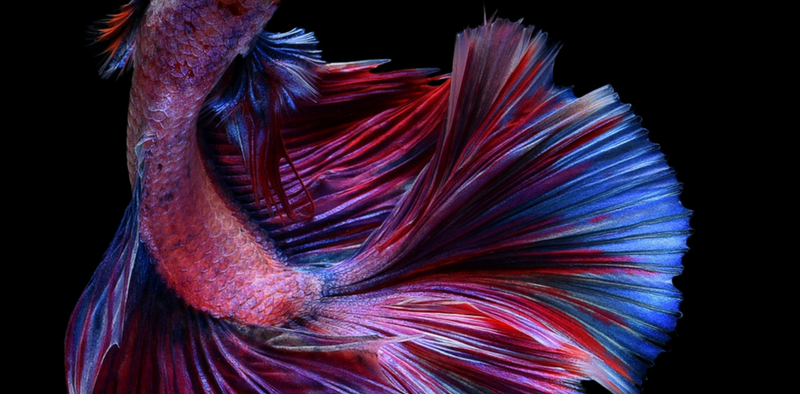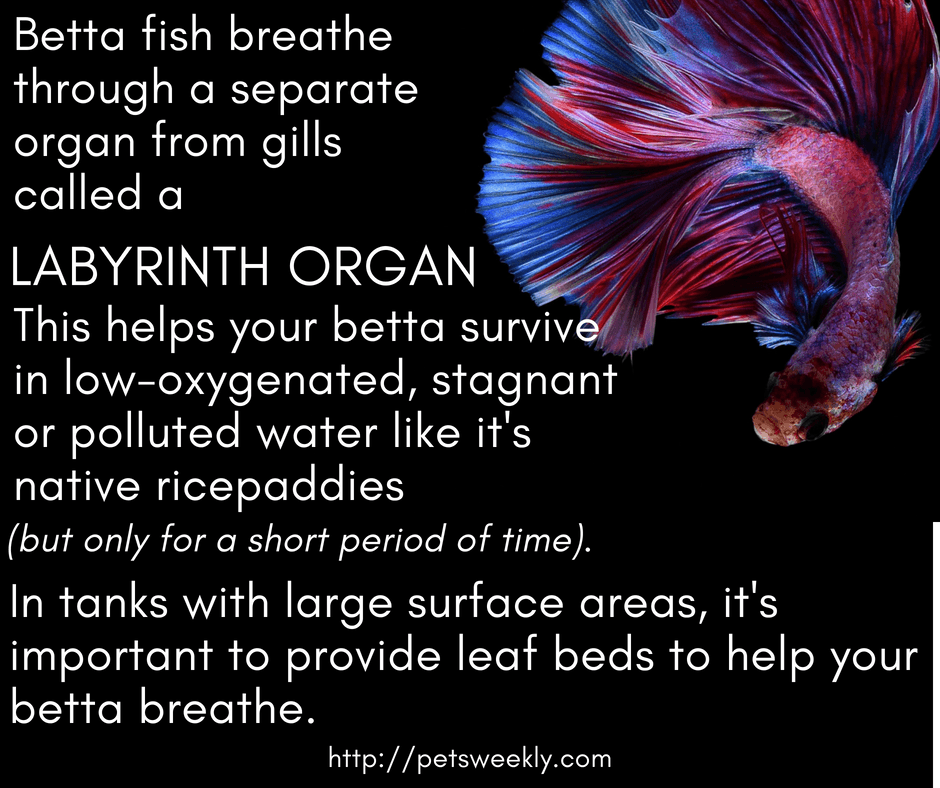Caring for Your New Betta Fish
Share

Feeding Your Betta
Bettas need a diet high in protein. Pet stores sell many different kinds of betta food, including floating pellets. You should try a few different types and alternative between them to give your betta some variation in its diet. Imagine if you had to eat the same food every day.
Bettas also like dried bloodworms and dried Daphnia. These foods are treats for bettas and can even be used in moderation for training. However, they should not be given to your betta every day, or used in place of pellets, because they do not contain all of the nutrients that your betta needs for proper growth.
Feed your betta once or perhaps twice a day and only give them as much food as they will eat in a few minutes. Extra food will go to waste and begin to rot, fouling the water.
Bettas are clever fish and will learn your routine. After a few days, they will begin to expect when they will be fed, swimming against the glass or even flaring their fins when they see you coming.
Bettas may even do this any time they see you, begging for extra food. If you feed your betta more than once a day, be sure to give very small portion sizes at a time. As we mentioned earlier, these beautiful fish are very much like dogs!
Plants, Decor and Environmental Enrichment for Betta Fish
Bettas need entertainment, just as you and I do. Imagine swimming around in a tiny tank all day – it wouldn’t be very fun if you never had anything else to do. Luckily, there are some ways you can enhance your tank to create a better quality of life for your betta.
A floating log toy or floating leaves, like these natural catappa leaves, are great ways to relieve boredom. They give your betta natural cover and since they are safe to put and leave in the tank, they will afford some entertainment when you’re not available to play. Bettas normally begin interacting with these toys within the day they are introduced.
Bettas love flat leaves that they float near or rest on the water surface. For this reason, many pet stores sell betta “leaf hammocks” that can be positioned near the surface.
 Plastic and silk plants work well too, though silk plants are preferred. If you buy plastic plants, make sure that there are no sharp edges that can tear your bettas’ long, flowing fins. you should also ensure that any plastic is BPA-free and safe for use with these delicate fish.
Plastic and silk plants work well too, though silk plants are preferred. If you buy plastic plants, make sure that there are no sharp edges that can tear your bettas’ long, flowing fins. you should also ensure that any plastic is BPA-free and safe for use with these delicate fish.
Verify that any other tank decoration, make sure that it has no sharp edges or small holes that your betta can get stuck in.
Betta Balls
One way to do this is by adding betta balls to the bottom of the tank.
Betta Balls [Aegagropila linnaei, known as marimo (毬藻, literally “ball seaweed”) in Japanese and as Cladophora ball, lake ball, mossimo or moss ball in English] are beautiful marimos moss that are a great addition of color and interest for any sized tank. Bettas love to move things around and Betta Balls can be a great enrichment toy for any fish.
Bettas have been known to display improved behavior when natural toys are introduced to the tank. Choose items that mimic their natural habitat. Properly selected, they act as a shelter to a betta and assist by providing cover while spawning.
Floating Mirrors
This floating mirror toy is a unique way to encourage your betta to exercise his fins via occular flare. While you never want to leave a mirror permanently affixed to the tank, placing a floating mirror on the water for a few minutes each day can help your fish feel like he’s in the wild.
Overcrowding
Also, make sure that the plants and decorations do not fill the tank and leave your betta without room to swim or block access to the surface. Bettas need room to access the surface so they can use their labyrinth organ to breathe. If they cannot access the surface, they can actually drown. This is why many bettas like broad leaves to sit on just beneath the surface; it makes it easier for them to get air.
Illness in your Betta
Bettas live an average lifespan of five years. However, male bettas are put on the market when they are a few years old after their colors and fins develop, so be sure to keep this in mind when purchasing your betta.
Bettas that are kept in a container that is too small or not cleaned regularly may develop ammonia burns and fin rot from swimming in their own waste. The only way to protect against this is by giving your betta clean water and plenty of room to swim.
With proper care, bettas make rewarding pets and are the perfect introduction into the world of fish keeping.











